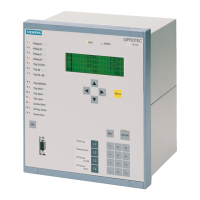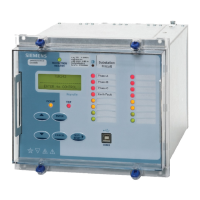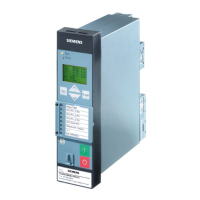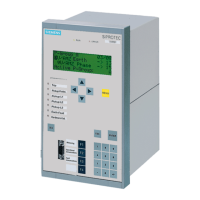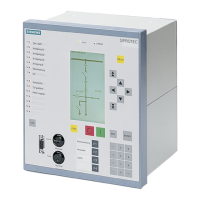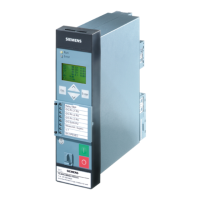7UT51 v3
Transformer Differential Protection (87T and 87HS)
4
PRIM-2330C 39
4 Transformer Differential Protection (87T and 87HS)
The transformer differential protection functions (87T
and 87HS) provide high speed, secure primary
protection for faults within a transformer. The trip
characteristic is configurable; as is restraint based on
the second-harmonic component of the differential
current; a choice of either third, fourth, or fifth
harmonic current; or detection that a through-fault is
causing CT saturation. The algorithm responds to
instantaneous current measurements, and so can
often detect a short circuit in less than one cycle.
The relay can also provide ground differential
protection 87N (see Chapter 7).
4.1 Method of Operation
Transformer differential protection is an application of
Kirchoff’s current law — the sum of all the currents
entering and leaving a node must be zero. If the sum
of all the
measured
currents into a node is not zero,
then there must exist an
unmeasured
current — a
fault. Since a transformer is not a passive node; the
differential protection must first “match” the measured
currents to take into account the behavior of currents
in the transformer. Also, the protection must allow for
the non-ideal behavior of real system and protection
components.
4.1.1 Matching Currents
Because the differential protection is comparing
currents for the same phase of different windings of
the transformer, it must
match
the measured currents
to take into account the behavior of currents within the
transformer. In particular, it must handle the different
power ratings of the windings, the phase shift across
the transformer, and the zero sequence current that
results from uneven loads on the three phases. Using
the transformer information entered by the user (see
Section 4.2 on page 43), the relay mathematically
matches the currents. Complicated CT wiring
schemes to match currents are not needed.
Information about the actual CT wiring and CTs is
required and entered in the 1100 Address Block (see
Section 4.3 on page 48).
Note that the relay can still be installed in an existing
scheme that has matching CTs (see Section 4.3.1 on
page 48 and Section 4.3.2 on page 48).
The relay computes the matched-current (I’) values
according the following matrix equation:
(4.1)
where:
I’ = matrix of matched currents I’
A
, I’
B
, I’
C
k
= scalar factor for matching current
amplitudes
K = matrix of factors for phase-angle matching
and processing of zero sequence current
I = matrix of measured currents I
A
, I
B
, I
C
.
For example, for a delta-wye transformer with a 30°
°°
°
phase lag, the relay would match currents using the
following matrix equation for the delta winding:
(4.2)
and the following equation to match the currents of the
grounded wye winding:
(4.3)
If a winding is grounded and has a CT measuring the
ground current, the measured ground current (I
G
) can
be used by a 7UT513 relay to correct for (rather than
just mathematically eliminate) the zero sequence
current. equation 4.1 then becomes:
(4.4)
I′[] kK[] I[]××=
I′
A
I′
B
I′
C
1
3
---
21–1–
1–21–
1–1–2
I
A
I
B
I
C
××=
I′
a
I′
b
I′c
1
3
-------
11–0
01 1–
1–01
I
a
I
b
I
c
××=
I′[] kK[] I[]××
1
3
---
I
G
[]×+=

